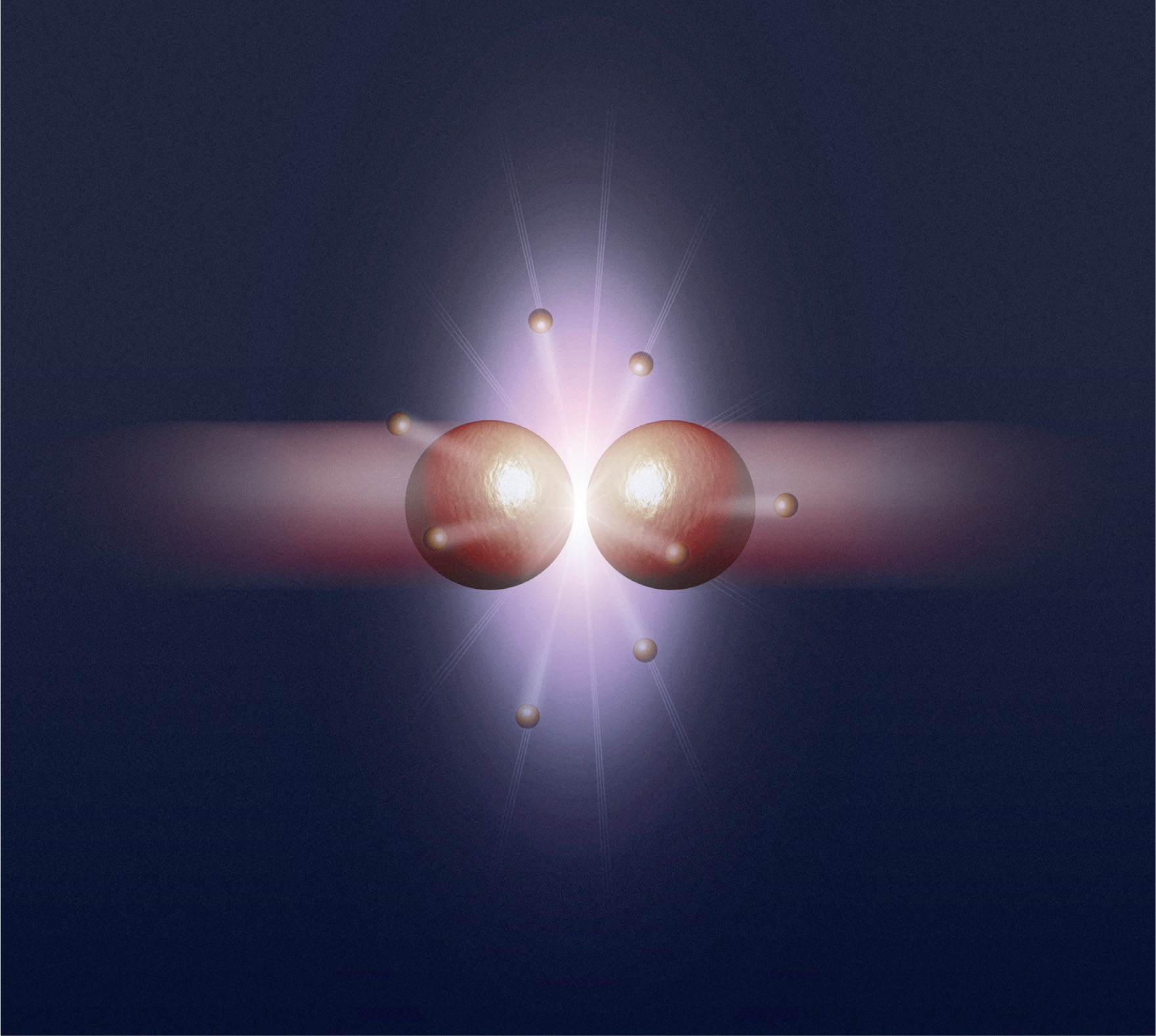
Artist’s impression of a proton-proton collision creating bosons.
The idea behind what became known as the Higgs particle emerged in the early 1960s, from studies of the way the forces of nature behave at a subatomic level. This was very much an idea whose time had come, and in 1964 several teams of researchers were investigating the possibilities. Peter Higgs worked alone at the University of Edinburgh; François Englert and Robert Brout worked together in Belgium; Tom Kibble, Gerald Guralnik, and Carl Hagen were working at Imperial College in London. Each team independently published papers pointing out more or less the same thing. Unknown to any of them, two young Russian theorists, Sacha Migdal and Sacha Polyakov, had also come up with the idea, but had been dissuaded from publishing by sceptical senior scientists who dismissed the suggestion.
The big idea concerns the behaviour of the particles that carry what is known as the weak force of nature. These are analogous to photons, the particles of light, but unlike photons they have mass. The weak force is involved in things like the nuclear interactions that keep the Sun shining, so all this is of far more than academic interest. But why should the particles of the weak force (dubbed W and Z bosons) have mass, while photons do not?
What became known as the BEH mechanism, from the initials of Brout, Englert and Higgs, offered an explanation, first pointed out by Kibble. But along the way it also offered an explanation of where the mass of every particle comes from, including things like electrons, and the quarks that seed the protons and neutrons that make up our everyday material world.
According to this idea, the Universe is filled with a field that interacts more strongly with some families of particle than with others. You can make a rough analogy with a magnetic field. Magnetic objects moving in a magnetic field are affected, but non-magnetic objects sail through the field serenely unaware of its existence. The only objects that are unaware of what is now called the Higgs field are photons, and they zip through it at the speed of light. Everyone knows that it is harder to get a heavy object moving than to get a light object moving. This is because particles that ‘feel’ this field a little bit move nearly as fast as photons at the slightest ‘push’, and particles that ‘feel’ the field strongly move correspondingly more slowly for a given amount of push. They have more inertia, which corresponds to more mass. But the field itself does not change. It is a bit like trying to wade through water. A streamlined fish can move much faster than a wading person, although they are both moving through the same liquid. This interaction with the Higgs field is what gives particles the property we call mass.
Alone among the six pioneers who published this idea, Peter Higgs realized that the field must have its own boson, and predicted its properties. This boson became known as the Higgs particle. Hardly surprisingly, the predicted Higgs particle would be aware of its own field, so it had to have mass. Such particles would not be around naturally today (although they were in the Big Bang), having given up their energy and decayed, in a process like radioactive decay. But they could be manufactured out of pure energy, in line with Einstein’s famous equation, in powerful enough machines. The mass predicted for the particle was so big, however, that there was no chance it could be detected with the particle accelerators available in the 1960s.
It was only in July 2012, 48 years after the mechanism was proposed, that it was announced that experiments at CERN’s Large Hadron Collider had observed a new type of particle in the mass region around 126 GeV. The properties of the particle exactly matched the predicted properties of the Higgs boson, in the simplest version of the BEH mechanism. This was an astounding achievement by what has been described as the most extensive (and expensive!) complex precision instrument in history, involving hundreds of researchers working on a project lasting more than two decades. The importance of the experiment, as much as the importance of the theory, was recognized in 2013, when the Nobel Prize in Physics was awarded to Higgs and Englert (Brout died in 2011, just before his idea was proved correct), but the experiment was also mentioned in the unusually lengthy citation ‘for the theoretical discovery of a mechanism that contributes to our understanding of the origin of mass of subatomic particles, and which recently was confirmed through the discovery of the predicted fundamental particle, by the ATLAS and CMS experiments at CERN’s Large Hadron Collider’.

